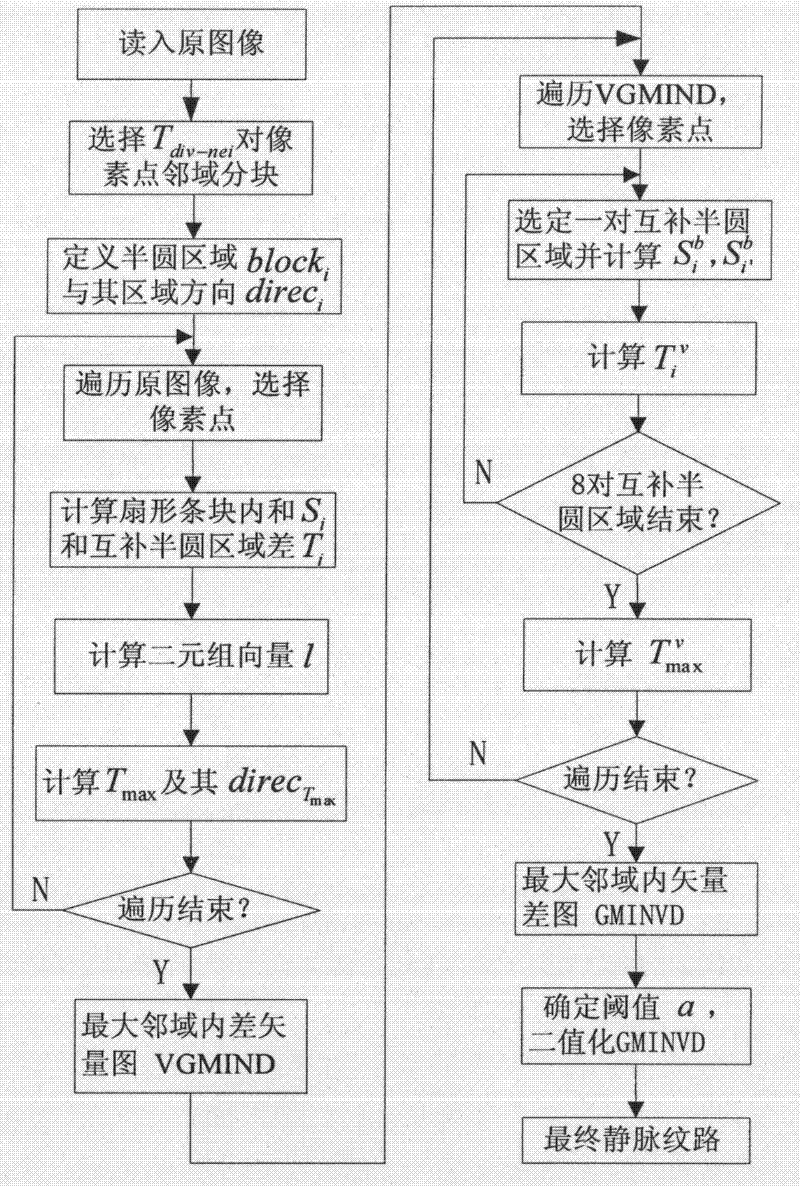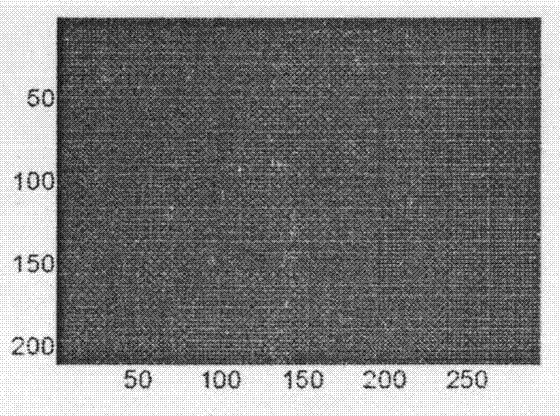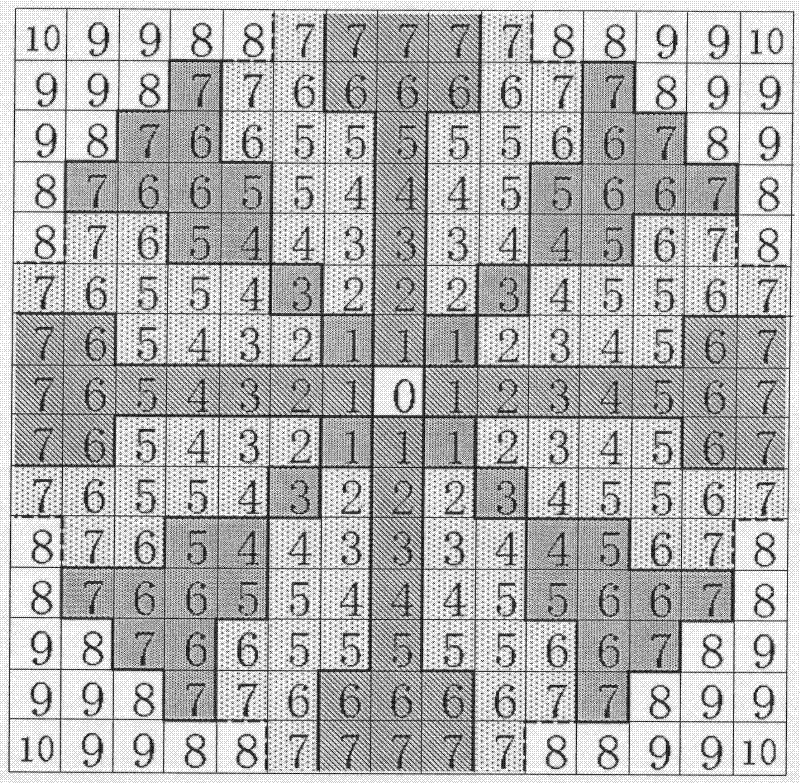Intravenous grain extraction method based on maximal intra-neighbor difference vector diagram
A technology of maximum neighborhood and extraction method, which is applied in the direction of instruments, character and pattern recognition, computer components, etc., and can solve problems such as easy to lose, unable to extract vein lines of floating endpoints, multi-noise, etc.
- Summary
- Abstract
- Description
- Claims
- Application Information
AI Technical Summary
Problems solved by technology
Method used
Image
Examples
Embodiment 1
[0048] Apply the vein pattern extraction method of the present invention to extract such as figure 2 The vein image structure shown, the flow chart of realization is as follows figure 1 Shown:
[0049] The first step is to take the neighborhood radius R=7 (the unit of R is a pixel), determine the neighborhood of any pixel in the original vein image according to the neighborhood radius and the distance function, and select such as image 3 The neighborhood block template T shown div-nei Divide the neighborhood into 16 adjacent fan-shaped blocks centered on the pixel mass i , i=1...16, fan-shaped block mass after block i and mass mod(i+7,16)+1 Symmetrical with the pixel as the origin; image 3 Among them, 0 means any selected pixel, the unit of each small square is a pixel, 1-7 means the pixels in the neighborhood of the pixel, and the pixels in the neighborhood are divided into 16 adjacent fan-shaped blocks, using Different shading is used to distinguish, and the number ...
Embodiment 2
[0074] Compare the existing Niblack method, the method based on MIND, the method based on DRDF and the vein pattern extraction method disclosed by the present invention to such as Figure 9a The effect of vein image extraction shown above, in order to compare the extraction results more clearly, we did not perform subsequent processing such as smoothing and denoising on the extracted image. Figure 9b It was extracted by Niblack method Figure 9a Schematic diagram of the image structure; Figure 9c was extracted using a MIND-based approach Figure 9a Schematic diagram of the image structure; Figure 9d is extracted using a DRDF-based method Figure 9a Schematic diagram of the image structure; Figure 9e is extracted by the method of the present invention Figure 9a Schematic diagram of the image structure (the step of extraction is the same as embodiment 1); In order to compare the impact of the preprocessing program on the effect of the method of the present invention, ...
Embodiment 3
[0076] Compare the existing Niblack method, the method based on MIND, the method based on DRDF and the vein pattern extraction method disclosed by the present invention to such as Figure 10a The effect of vein image extraction shown above, in order to compare the extraction results more clearly, we did not perform subsequent processing such as smoothing and denoising on the extracted image. Figure 10b It was extracted by Niblack method Figure 10a Schematic diagram of the image structure; Figure 10c was extracted using a MIND-based approach Figure 10a Schematic diagram of the image structure; Figure 10d is extracted using a DRDF-based method Figure 10a Schematic diagram of the image structure; Figure 10e is extracted by the method of the present invention Figure 10a Schematic diagram of the image structure (the step of extraction is the same as embodiment 1); In order to compare the impact of the preprocessing program on the effect of the method of the present inv...
PUM
 Login to View More
Login to View More Abstract
Description
Claims
Application Information
 Login to View More
Login to View More - R&D
- Intellectual Property
- Life Sciences
- Materials
- Tech Scout
- Unparalleled Data Quality
- Higher Quality Content
- 60% Fewer Hallucinations
Browse by: Latest US Patents, China's latest patents, Technical Efficacy Thesaurus, Application Domain, Technology Topic, Popular Technical Reports.
© 2025 PatSnap. All rights reserved.Legal|Privacy policy|Modern Slavery Act Transparency Statement|Sitemap|About US| Contact US: help@patsnap.com



